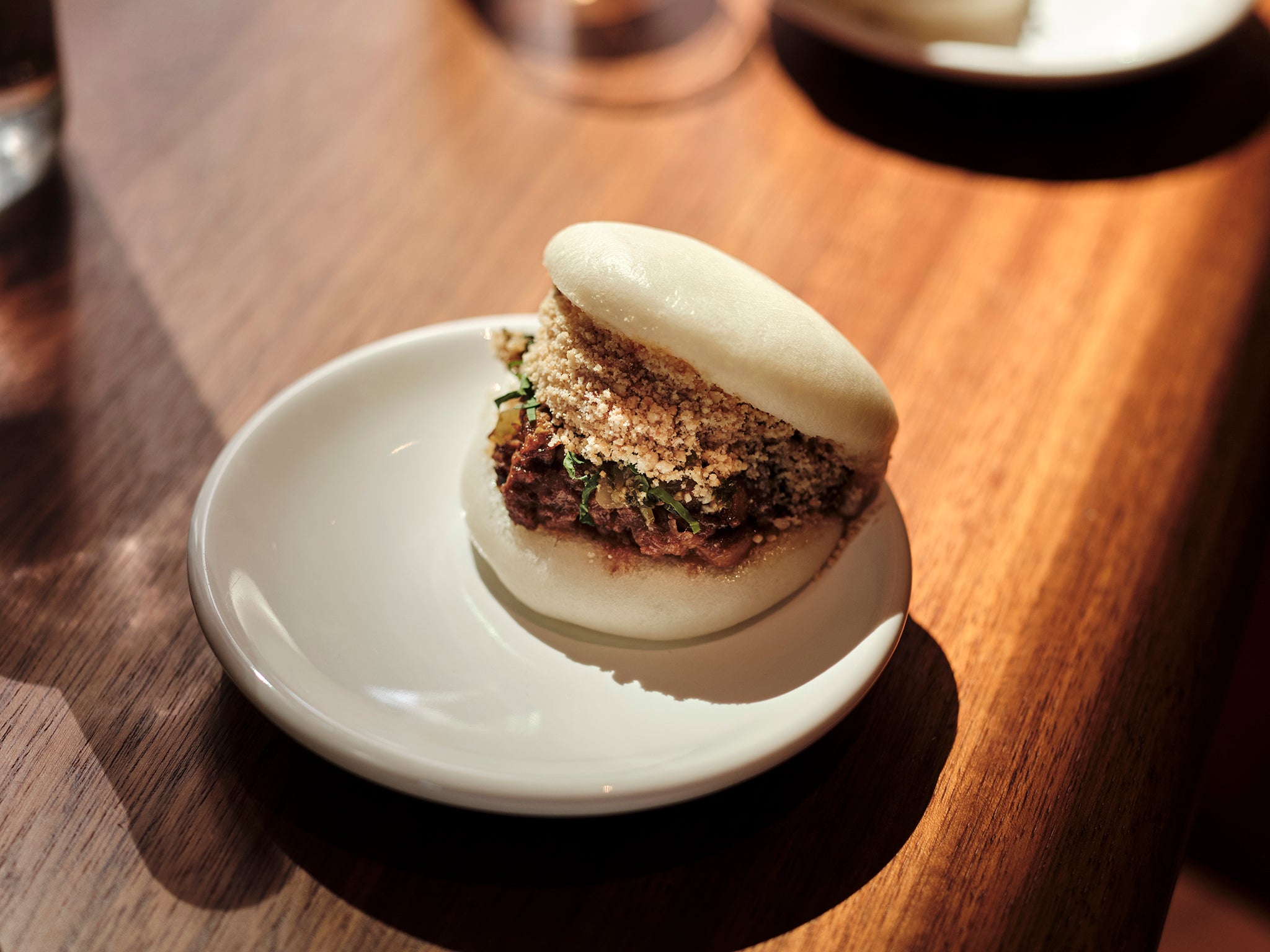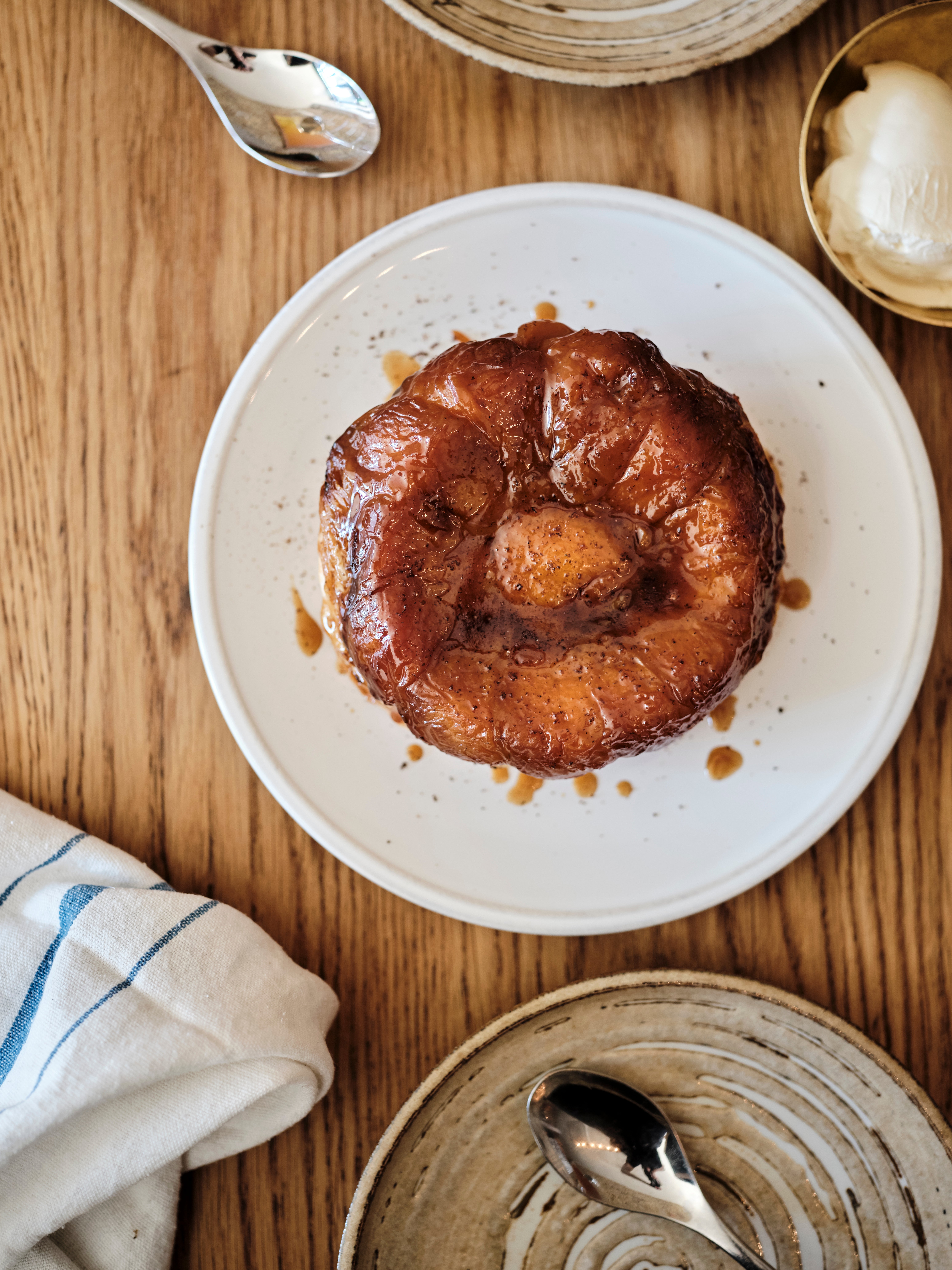The Female Chef: Recipes from the women redefining the British food scene
The historic gender imbalance in food is far from solved but Clare Finney and Liz Seabrook’s award-winning debut book ‘The Female Chef’ is a step towards setting it right, says Hannah Twiggs


From celebrating the world’s rarest foods to a culinary cruise across South America one bottle of wine a time, this year’s Fortnum and Mason Food and Drink Awards showcased an extraordinary devotion to the industry’s personalities, stories and culture.
In an industry typically dominated by men, it was encouraging to see a book profiling 31 women at the forefront of modern British food, and the experiences that got them there, win the Debut Food Book award.
A glance at the current list of British Michelin-starred chefs – and, indeed, the list of winners at the Food and Drink Awards – will tell you the food scene’s historic gender imbalance is far from solved. That’s where The Female Chef, by food writer Clare Finney, who has contributed to The Independent, and food stylist Liz Seabrook, steps in.
Bringing together insightful interviews with some of the country’s pioneering women in food, original portraits and each chef’s most memorable recipe, the book tells a different kind of story: one that will shake up the narrative of what it means to be a woman and a chef in the British food industry. Angela Hartnett, Thomasina Miers, Andi Oliver, Gizzi Erskine, Ravinder Bhogal and Olia Hercules are just some of the names you can expect.
The following recipes are an extract from the book.
Erchen Chang’s braised pork gua bao
Back in 2012, when we’d just graduated from university, Shing, Wai Ting and I went on a road trip together to where I’m from in Taiwan. We love cooking and making things with our hands and when we were travelling, we talked about ideas to perfect the bao and search for the perfect balance of this classic. Our braised pork bao features in all of our restaurants, it’s the beginning and the core of BAO. It’s a great example of taking something with heritage and examining, researching and testing over a period of time to achieve the art of perfection.
Serves: Around 20
For the gua bao:
500g plain flour
2 tsp yeast
145ml warm water
2 pinches of salt
50g sugar
1 tbsp vegetable oil, plus extra for brushing
145ml milk
For the soy-braised pork belly:
1kg pork belly
50ml light soy sauce
40ml dark soy sauce
60ml Shaoxing wine
2 spring onions
1 garlic clove, crushed
20g fresh ginger, sliced and crushed
1 whole star anise
20g rock sugar
Pinch of garlic powder
4 whole dried red chillies
6g cinnamon bark
For the fermented mustard greens:
1kg Chinese mustard greens
20g salt (or 2% salt of the weight of the veg)
2 tbsp vegetable oil
2 tsp doubanjiang (a fermented broad bean paste that you can easily find in Chinese supermarkets)
Rice wine vinegar, to season
For the peanut powder:
200g deshelled peanuts
2 tbsp caster sugar
To serve:
Handful of coriander
Method:
Prepare the fermented mustard greens preferably 2 weeks in advance. First, wash the mustard greens thoroughly, then chop them into 3cm pieces. Sprinkle the salt evenly over the greens and work your hands through them to ensure the salt is properly mixed in. Sterilise a glass jar and fill it with the salted greens, packed as tightly as possible. After a time, the salt will draw out the liquid from the greens. This liquid should cover the greens – if it doesn’t, place something heavy on top to submerge the greens in their own brine. Leave to ferment for at least 7 days, but the longer the better.
On the day, start with the soy-braised pork belly. Cut the pork belly into manageable blocks so that it will easily fit into your pot, around 5x5cm/2x2in. Blanch the pieces first by dropping them into a pot of boiling water for a moment or two, this will get rid of any impurities. Then place the pork in a casserole dish or large saucepan.
Add the rest of the pork belly ingredients to the dish or pan, then pour over cold water until everything is just covered. Bring to the boil, then turn the heat down low. Let it simmer for 2 hours – the simmer should be very low with small bub- bles on the surface.
Meanwhile, make the peanut powder. Heat the oven to 175C/350F (155C/310F fan), place the peanuts on a baking tray and roast until golden, roughly 20–25 minutes. Let them cool completely, then tip some into a food processor and blitz to a fine powder. It is best to do this in small batches, as peanuts have a high fat content and can turn into peanut butter in no time. Mix the powder with the caster sugar and set aside.
While the pork is simmering, start preparing the gua bao. First mix the flour, yeast and warm water together in a bowl. Cover and leave for at least 30 minutes in a warm place until doubled in size. Then add the remaining ingredients and mix until it comes together as one.
Turn the dough out onto a floured work sur- face and knead for 10 minutes – it will be sticky but gradually become more elastic. Divide the dough into around twenty 40g pieces. Give each one of them a strong knead and roll them into tight balls. Place them on baking sheets and cover as you go, to prevent them drying out.
Dust the work surface with more flour and flatten the balled pieces of dough with your hand, then use a rolling pin to roll each one into an oval shape, around 5mm thick. Brush one side with vegetable oil. With the oiled side up, fold one edge of the dough over onto the other and press down gently so it forms an oyster shell shape.
Place the bao on baking parchment in a warm bamboo steamer (or in whatever you normally use to steam vegetables) and leave to rest for 15-20 minutes in a warm place to rise again.
Meanwhile, drain the fermenting mustard greens and finely chop them. Heat the 2 tablespoons of vegetable oil in a frying pan over a medium-high heat. Add the doubanjiang and let it fry. Once the doubanjiang starts to turn the oil red, add in the chopped, fermented greens and stir-fry for 5-10 minutes, until the greens are super fragrant and wilted. Season with a few drops of rice wine vinegar and set aside.
When the gua bao have risen, place the steamer over a medium-high heat and steam the gua bao for 15 minutes.
While they are steaming, and once the pork has had its 2 hours, remove the pork belly from your dish or pot and set it aside to cool, then dis- card the spices and vegetables and bring the braising liquid to a boil over a high heat. Reduce to a light, sticky consistency. Once the pork belly has cooled slightly, chop it into rough cubes around 1cm. Add the chopped pork back into the reduced sauce and give it a good stir. Turn the heat down to low and cook for 10 minutes to let the pork mingle with the sauce. Wash and finely chop the coriander.
Check the gua bao are steamed all the way through by pressing one with your finger; if it bounces back nicely it is ready. (If not using straight away, the bao will keep in the fridge for 5-7 days, or in the freezer for up to a month.)
When ready to serve, use heat-resistant gloves to assemble each of the bao with some of the piping-hot silky pork, fried fermented mus- tard greens, a big pinch of chopped coriander and a dusting of golden, sweet peanut powder. Enjoy immediately.
Ixta Belfrage’s upside-down plantain omelette with scotch bonnet salsa

My mother, a Brazilian who grew up in Cuba, is obsessed with plantains. She grew up eating them alongside pretty much every meal and brought my sister and me up in the same way, so now my fruit bowl is never without a pile of blackening plantains. There is a plantain recipe for every stage of ripeness, from hard and green to soft and black. This recipe calls for plantains that are ripe and sweet, preferably nearly all black, with only some yellow marks. In truth, I only ever use plantains at this stage of ripeness. Unripe plantain is no substitute here because you won’t achieve the sweet, caramelised layer we’re looking for.
Serves: 2 as a main or 4 as part of a spread
For the omelette:
120g full-fat coconut milk, from a tin not a carton (at least 75% coconut extract)
6 eggs
½ tsp fresh ginger, peeled and finely grated (or ¼ tsp ground ginger)
1 small garlic clove, finely grated or crushed
1 tsp lime zest
¾ tsp fine salt
5g chives, finely chopped
5g coriander, finely chopped
40g spring greens (or spinach or kale), very thinly sliced
100g feta, broken into medium chunks
2 very ripe medium-sized plantains (460g) – they should be nearly all black and quite soft, with only some yellow marks
30g ghee or unsalted butter
1 tbsp olive oil, plus extra for drizzling flaked salt, to serve lime wedges, to serve
For the salsa:
200g extra-ripe sweet cherry tomatoes
1 tsp lime zest
1 tbsp lime juice
1½tbsp olive oil
½ tsp flaked salt
1-2 Scotch bonnet chillies (or a milder chilli if you prefer), to taste
Method:
Preheat the oven to 200C/390F (180C/360F fan). Before measuring out your coconut milk, take all the contents out of the tin and whisk well to combine the solid and the liquid then weigh out the 120g. Add the coconut milk to a large bowl with the eggs, ginger, garlic, lime zest and fine salt and whisk together. Stir in the chives, coriander, spring greens and feta, then set aside.
Peel the plantains and slice into ¾cm rounds. You need about 320g peeled slices.
Place a 28cm ovenproof, non-stick frying pan on a medium-high heat and add the ghee (or butter) and the oil. Once the ghee has melted, layer the plantain slices to cover the bottom of the pan, then set a timer for 3 minutes, and cook without stirring or flipping the plantain, to create a caramelised, golden layer on the bottom of the pan. Lower the heat, then pour over the egg mixture to evenly cover the base and leave to fry for another minute undisturbed. The omelette should be set around the edges but still liquid in the middle.
Transfer the pan to the oven and bake for 8-9 minutes, until the omelette is just set on top, with a good wobble in the centre. Don’t be afraid of this wobble, the omelette will set a little as it cools, but also we (or at least I) want the omelette to have a soft, oozing centre! Leave to cool for 5 minutes, then use a spatula to release the sides of the omelette from the pan.
While the omelette is in the oven, make the salsa. Finely chop the cherry tomatoes into very small pieces. Transfer to a medium bowl, using your hands as a natural sieve so you don’t take all the liquid and seeds with you (otherwise the salsa will be quite soggy). Stir in the lime zest, lime juice, oil and flaked salt. Very finely chop the Scotch bonnet; they vary substantially in heat level so start with ½ a chilli, removing the seeds and pith if you prefer milder heat. Add to the salsa, stir and taste, then add up to 1½ more finely chopped chillies, to taste.
Place a large plate on top of the pan, then quickly flip the whole thing over so the omelette ends up on the plate. Hopefully all the plantain pieces will end up on the omelette, but if not just peel them from the pan and place them back on top.
Drizzle with a little oil and sprinkle with more flaked salt. Serve with the salsa on the side, and some extra lime wedges for squeezing.
Chantelle Nicholson’s apricot tarte tatin

Making tarte tatin was one of the first jobs I had to do when I started at The Savoy Grill. I had never made, nor eaten, one before, so it was a wonderful discovery. And apricots have a special place in my heart – I am lucky enough to have eaten the best, grown by my family in Central Otago; gently plucked from the tree, sun-ripened and super sweet.
Serves: 2
8 apricots
50g caster sugar
160g all-butter puff pastry
½ a piece of star anise
50g butter (kept in the fridge)
Créme fraîche, to serve
Method:
Roll out the puff pastry to 3mm thick, then pop it onto a piece of baking parchment and put it back in the fridge for 20 minutes so the pastry can rest. Meanwhile, preheat the oven to 195C/380F (175C/350F fan), remove the butter from the fridge and halve and destone the apricots.
Remove the pastry from the fridge and cut a circle to fit a small, ovenproof saucepan (approximately 12-14cm in diameter). Place the pastry circle back on the baking parchment and return to the fridge.
Cut the butter into 4 pieces then press it firmly into the saucepan, using the top part of a clenched hand, into an even layer. Sprinkle over the sugar and shake the pan to distribute it evenly.
Grate 2 petals of the star anise onto the sugar. Push the side of one apricot half, skin down, into then the sugared butter then lay the rest around the outer part of the pan, covering each other like fallen dominoes and finish with two in the centre.
Remove the pastry from the fridge and place on top of the apricots in the very centre of the pan. Cook over a medium-high heat until the butter and sugar begin to bubble and a golden caramel begins to form around the edges of the pastry. Put in the oven for 40-50 minutes, until the pastry is cooked through and golden. Allow to rest for 5-7 minutes before placing a plate on top of the pan, then flip the entire pan over so the tarte tatin slips gracefully onto the plate to be sliced. Serve with créme fraîche and anything else you fancy – ice cream, custard or cream.
Recipes from ‘The Female Chef’ by Clare Finney and Liz Seabrook (published by Hoxton Mini Press, £28; photography by Liz Seabrook), available now.
Join our commenting forum
Join thought-provoking conversations, follow other Independent readers and see their replies
Comments